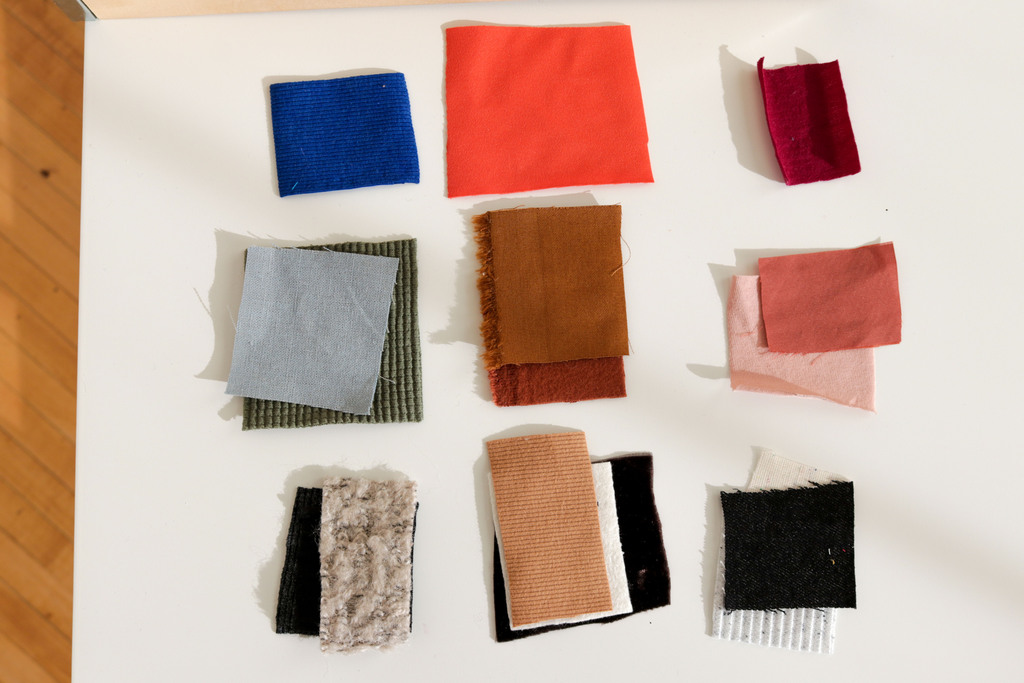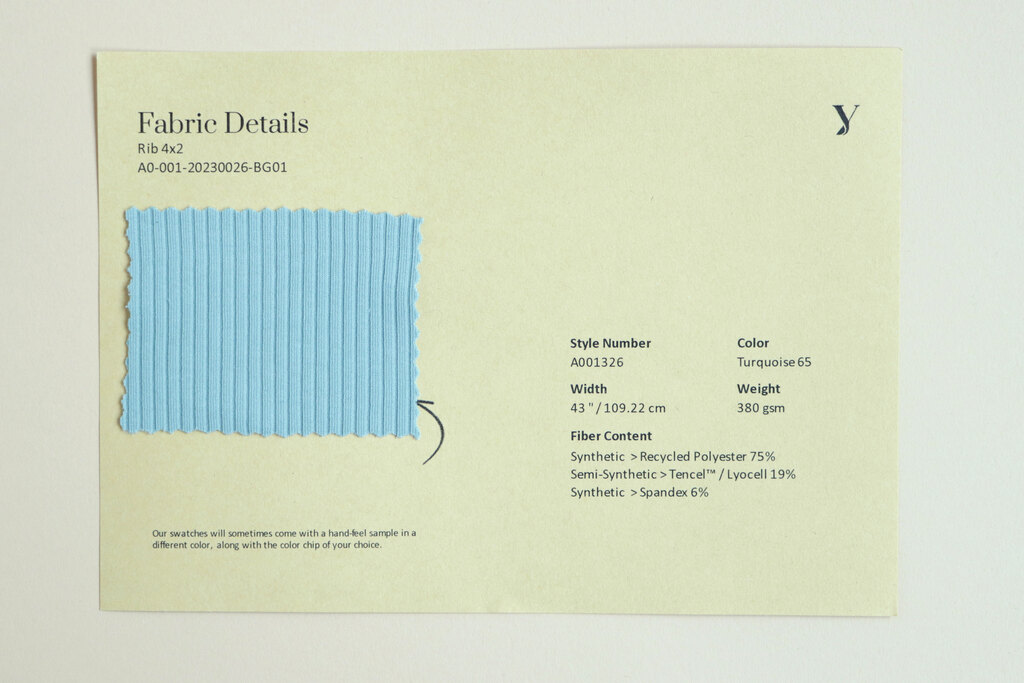How to Shop for Fabric Online
There’s nothing quite like shopping in a fabric store. You can touch any bolt—or all of the bolts—and unroll the fabric a bit to see how it hangs on your body. You can compare colors and textures side by side, and the fabric contents and care instructions are spelled out right on the bolt.
But when you’re shopping for fabric online, you lose that tactile experience. So, how do you make sure you’re choosing the right fabric for your project?

It can be tricky to judge true colors on a screen, and how do you know if the fabric will be soft, clingy, or stiff just by looking at photos? Without the ability to touch and feel, it’s easy to feel uncertain about your choice.
This guide will walk you through everything you need to know to confidently shop for fabric online.
You’ll learn how to interpret product descriptions and visualize how fabrics will look and feel, so you can choose the perfect fabric for your next project—no in-person shopping required.
Learn As You Go
Before diving into all the tips and terms in this article, remember that when you’re shopping for fabric online, you have access to all the information you need right at your fingertips.
If you come across an unfamiliar term on a fabric shop’s website, simply open a new browser tab and look it up. It’s a quick and easy way to learn as you go.
Another tip is to check the tags of your favorite garments in your closet. Look up the fiber content listed and see what you can find out about those materials.
As you look up all these terms, take notes. You can jot down your favorite fibers and even make a do-not-buy list of fabrics you know you’ll never wear. Add swatches to this list, and you’ll have your own custom fabric library to reference any time you go shopping.
How to Understand Different Types of Fabric

Knowing the basics about different types of fabrics and their characteristics is the very first step to successfully buying fabric online.
Although your quest for fabric facts can feel neverending, you don't need a degree in textiles to figure out what you like. You’re probably already familiar with a bunch of common fabrics, like cotton, polyester, rayon, wool, jersey knits, and denim.
Here are some other fabric guides you can use to get a good start:
- A Guide to Sewing Denim: Tips and tricks for sewing professional denim garments.
- A Guide to Sewing with Corduroy: This fabric always has a little bit of a retro vibe, and it never goes out of style.
- A Guide to Sewing with Sherpa: Soft, fluffy, warm, and vegan—how to sew with this snuggly knit fabric.
- The Ultimate Guide to Sewing with Silk: Everything you need to know about sewing with silk.
- A Beginner's Guide to Sewing Velvet: Make sumptuous velvet frocks with ease.
- Swimwear Basics: Everything you need to know about sewing your own swimsuit.
- How to Sew With Rib Knit Fabric: What is rib knit, what can you sew with it, and how is it different from ribbing?
- A Guide to Loungewear Fabrics and Patterns: What fabrics are best for lounging and sleeping?
- How to Sew with Rayon: Expert Tips and Inspiring Projects: Discover the different kinds of rayon, how to sew with them, and what projects are best for this versatile fabric.
- What is Twill?: How to sew with twill fabrics.
- All About Sweatshirt Fleece: What makes this fabric so cozy? Get tips and a bunch of inspiring project ideas for sewing with fleece.
If you're a Seamwork member, you get up to 20% off at dozens of fabric shops worldwide. See a list of our fabric store partners here.
How to Read Fabric Descriptions Effectively
Product descriptions are like your personal shopping guides when you’re browsing fabric online. They provide crucial information about the fabric’s characteristics.
Every fabric store has their own writing style. Some might use bulleted lists while others paint a vivid picture of how the fabric will wear. All of them will be packed with terms that you’re supposed to know.
Here’s the key terminology to help you decode online fabric descriptions.
Fiber Content
The fiber content is the type of fibers that make up the fabric. You need to know about the fibers to understand the fabric's properties, including its breathability, durability, texture, and how you should care for it.
Understanding the fiber content will help you predict how the fabric will behave on your body and how it will feel in different seasons.

When you are shopping online and you see a few different fiber contents in a fabric, look up each of them to find their qualities and take note of their pros and cons.
Natural fibers come from nature, like plants and animals. They include cotton, linen, silk, and wool. They’re often breathable and comfortable, but they do tend to shrink.
Other natural fibers include silk, hemp, cashmere, alpaca, angora, jute, bamboo, and flax.
Synthetic fibers are made by humans. Polyester and spandex are examples you’re likely familar with. They tend to be more durable and wrinkle-resistant but may lack the breathability of natural fibers, and can come with a steeper environmental cost.
Other synthetic fibers include nylon, acrylic, elastane, and microfibers.
Semi-synthetic fibers are often derived from natural sources, most commonly plant cellulose, but chemically processed. Rayon is an example of a semi-synthetic fiber. It’s usually plant pulp that is heavily processed to take its final form.
Other semi-synthetic fibers include PLA (a type of polyester made from plant starch), acetate, viscose, lyocell, cupro, acetate, and modal.
Blends. Many fabrics are blends of natural and synthetic fibers, combining the best properties of both. The more you explore fabric, the more you will understand the percentages you like. You might find you prefer fabrics that mostly contain natural fibers with some synthetics added—like spandex or elastane for stretch.
How to shop for the right fiber content:
This is highly personal, so make note of your preferences.
- Do I want breathability?
- Do I want to avoid wrinkles?
- Do I want a natural fiber for environmental reasons?
- Are there certain blends in my closet that I love to wear?
Weave
The weave describes the structure of woven fabric, or how the fibers are interlaced together.
It’s important to understand different weaves, because they affect the fabric's texture, strength, durability, drape, and overall appearance.
Global logistics
It can be shipped worldwide
About the MOQ
Minimum order quantity of 200 pieces
Support 24/7
Call us:(+86)138 0277 1794
Free sample
200 pieces MOQ Free sample

Customized product message